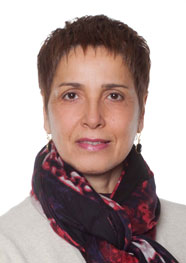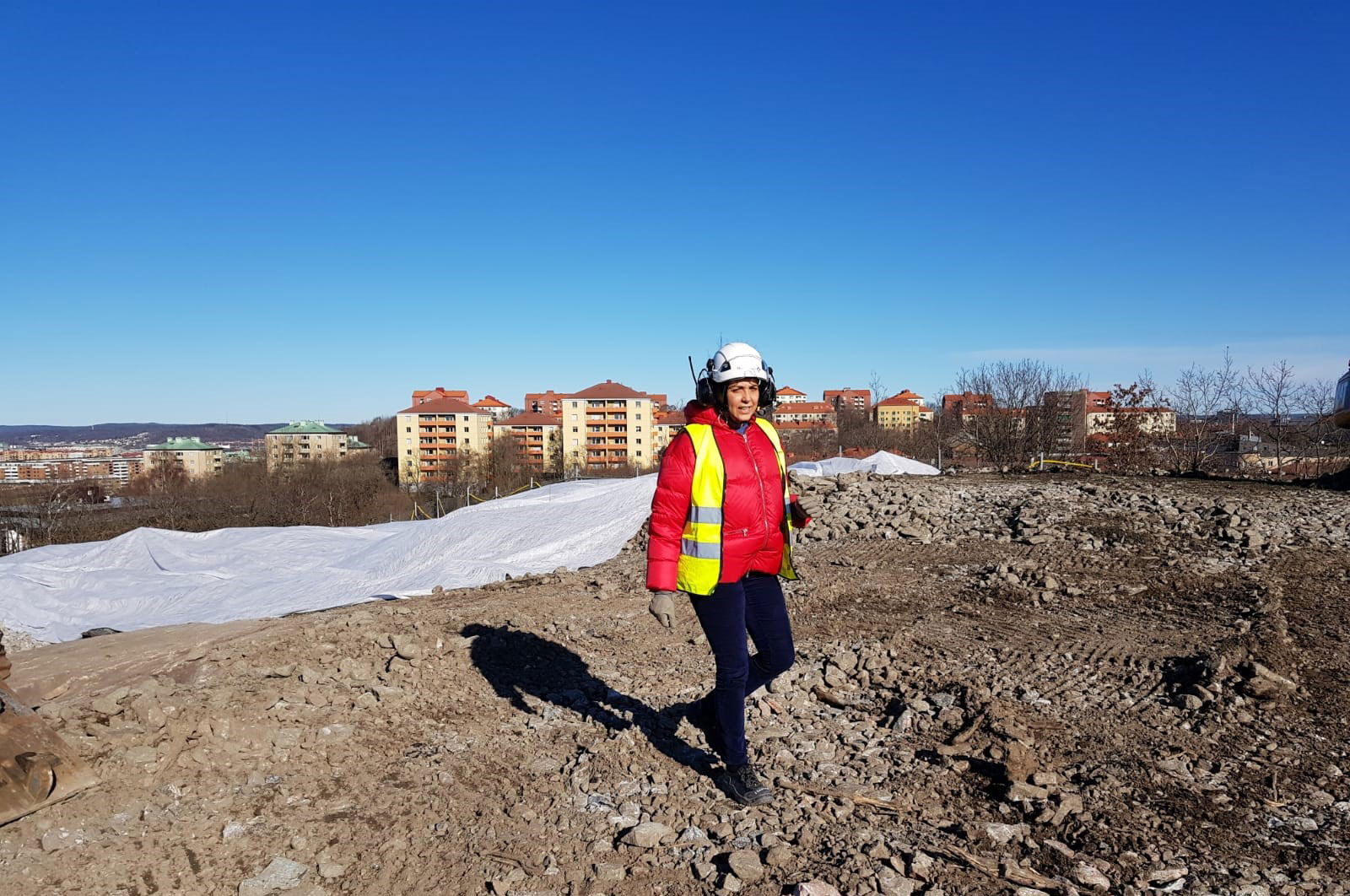CONSTRUCTION WORK. Outside Julia Fernandez- Rodriguez’ window, blasting and other land clearance operations are in full swing. As head of the National Centre for Cellular Imaging (CCI), she has been facing a completely new challenge: managing activities despite disruptions that affect research and the work environment alike. Moreover, the CCI needs to prepare itself for moving out of its current premises, since this is precisely where the new building is to be joined up with the Medicinarelängan complex.
“Right now, we’re doing our best to manage a stressful situation. Our instruments are highly sensitive, and they react to the blasting. So we can’t rely on the images we produce during the blasting period. We’re also concerned about delays in the projects. The sound level means that it may sometimes be difficult to concentrate, but what we’re working on requires closeness to the instruments, so staying at home and working there is no solution. That’s why we’re worried about what’s going to happen when the blasting gets closer,” Julia says.
Julia understands that the University needs new premises, but is not too pleased with the location of the new building. Nonetheless, she thinks the dialogue with the project and contractors has worked well. They have visited Julia’s team several times.
”We’re glad they’ve chosen a low-impact blasting method. In the course of the work, they’ve also proved willing to adapt their way of working, but it’s not entirely easy to find the optimal method. What has a low impact on one instrument may cause problems for another.”
Different view from hilltop
Julia herself has been on top of the hill when blasting was carried out.

”I could see for myself how they build up the ground beneath in terraces, to prevent rocks and other debris from rolling down the slope — something you can’t see from inside our part of the building. So I’m not worried about our own safety. I also got a glimpse of how they control movements caused by the blasting, and how they adapt the strength of the blast to the limit values set for our instruments.”
Getting suitable premises
Julia is looking forward to the day when CCI can move into premises that are fit for purpose and all the equipment has been reinstalled, calibrated and commissioned. This process, which can sometimes take weeks for each instrument, must be done by specialised technicians at the instrument supplier, and causes some concern about the equipment losing its effectiveness after the move.
“I’m hoping for premises that are functional for our type of work, and where we can also expand and develop our activities. Our current premises don’t offer that scope. For us, it’s also very important to keep our work coherent and retain the synergies we’ve struggled to achieve. We’re now waiting for a decision on where we should go, and a time schedule for that,” says Julia, who says they need to cope with the situation until the decision is made.
About the CCI
The National Centre for Cellular Imaging (CCI) is a resource centre for advanced microscopy (both light and electron microscopy), focusing on creating images of biological events at cellular and molecular level, in fixed or living cell-culture or tissue samples. The Centre is open to all researchers and has 150–200 users a year.
TEXT: HELEN EASTERLING











